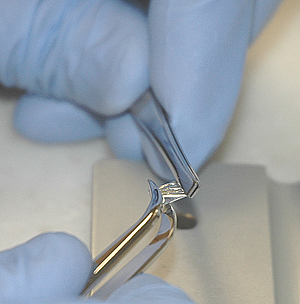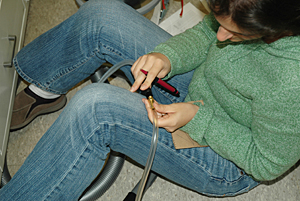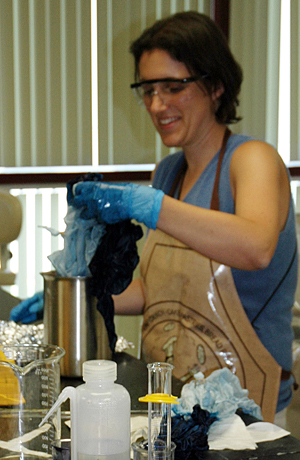

- UD grad interns help preserve mummies, spacesuit, other cultural treasures
- Bringing a saintly portrait back to life in Missouri
- Conserving a knight's shield from ages past
- Käsebier photographs conserved at National Gallery of Canada
- Examining ancient Egyptian mummies at the Walters Art Museum
- Restoring Southwestern pottery at the Arizona State Museum
- Caring for Maryland's first settlement, Armstrong's spacesuit
- Preserving masterpieces at the Walters Art Museum
- 'Big Four' railroad magnate's paintings undergo conservation at Yale
- Studying indigo dyes at the Smithsonian
- Treating a Moorish Islamic ceiling at the Metropolitan Museum of Art
Editor's note: The Winterthur/University of Delaware Program in Art Conservation is one of only five graduate-level conservation programs in the United States. Graduate students in the program spend their third year in an advanced internship at museums and studios around the world.
Here, Elizabeth Shuster reports on her work at the Smithsonian Institution's Museum Conservation Institute.
10:35 a.m., March 19, 2009----My work at the Smithsonian Institution's Museum Conservation Institute (MCI) emphasizes research, since this is an arm of the Smithsonian that is not tied to any particular collection or exhibition schedule.
I have primarily been working on a study of indigo dyes in cultural artifacts. Indigo has been used since ancient times and played an important role in early trade patterns between East and West. In 1897, synthetic indigo became available and nearly completely superseded natural indigo cultivation by 1920.
The chemical composition of the various forms of indigo used in cultural artifacts over time is identical, but we can learn a lot about the provenance of an object based on the source and methods of processing the indigo used to produce it. We are attempting to do this at MCI using stable isotope mass spectroscopy and/or Raman spectroscopy. My job has been to assemble and prepare the initial sample set. In one of my pictures, I have just weighed out a very small sample of powdered synthetic indigo from a commercial manufacturer in a tiny weighboat that is folded so that it can be run through the stable isotope mass spectrometer.
Another, somewhat less scientific, research project I have been working on is vacuum testing. Presently, there is no clear definition for textile conservators of what constitutes appropriate vacuum suction, and conservators do not measure the level of vacuum suction used. Even if they specify the make and model of vacuum, the variable speed control setting, and the type of attachment and screening they are using in their work, there is no protocol to guide the hand of the conservator using this equipment. Often, surface cleaning is assigned to volunteers and trainees in the field of textile conservation, such as myself.
By compiling and comparing data for current, suction strength, and air flow, I hope to be able to postulate practical, standardized recommendations for how to surface-clean textiles with the most efficiency while exerting the minimum force on the object, thereby ensuring consistent and appropriate treatments. To do this, I am attempting to measure suction strength and air flow of the vacuums in the lab at MCI at various settings, with various attachments, and at various distances and angles from the textile surface.



